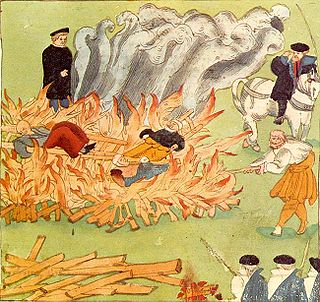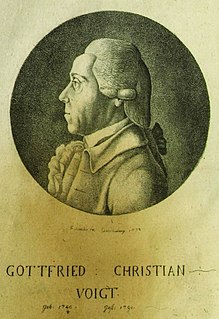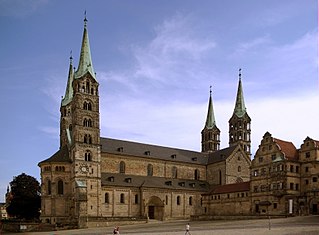
The Inquisition was a group of institutions within the Catholic Church whose aim was to combat heresy, conducting trials of suspected heretics. Studies of the records have found that the overwhelming majority of sentences consisted of penances, but that cases of repeat unrepentant heretics were handed over to the secular courts, which generally resulted in execution or life imprisonment. The Inquisition had its start in the 12th-century Kingdom of France, with the aim of combating religious deviation, particularly among the Cathars and the Waldensians. The inquisitorial courts from this time until the mid-15th century are together known as the Medieval Inquisition. Other groups investigated during the Medieval Inquisition, which primarily took place in France and Italy, include the Spiritual Franciscans, the Hussites, and the Beguines. Beginning in the 1250s, inquisitors were generally chosen from members of the Dominican Order, replacing the earlier practice of using local clergy as judges.
The Roman Inquisition, formally the Supreme Sacred Congregation of the Roman and Universal Inquisition, was a system of tribunals developed by the Holy See of the Roman Catholic Church, during the second half of the 16th century, responsible for prosecuting individuals accused of a wide array of crimes relating to religious doctrine or alternative religious beliefs. In the period after the Medieval Inquisition, it was one of three different manifestations of the wider Catholic Inquisition along with the Spanish Inquisition and Portuguese Inquisition.

Witchcraft traditionally means the use of magic or supernatural powers to harm others. A practitioner is a witch. In medieval and early modern Europe, where the term originated, accused witches were usually women who were believed to have attacked their own community, and often to have communed with evil beings. It was thought witchcraft could be thwarted by protective magic or counter-magic, which could be provided by cunning folk or folk healers. Suspected witches were also intimidated, banished, attacked or killed. Often they would be formally prosecuted and punished, if found guilty or simply believed to be guilty. European witch-hunts and witch trials in the early modern period led to tens of thousands of executions. In some regions, many of those accused of witchcraft were folk healers or midwives. European belief in witchcraft gradually dwindled during and after the Age of Enlightenment.

A witch-hunt, or a witch purge, is a search for people who have been labeled witches or a search for evidence of witchcraft. The classical period of witch-hunts in Early Modern Europe and Colonial America took place in the Early Modern period or about 1450 to 1750, spanning the upheavals of the Reformation and the Thirty Years' War, resulting in an estimated 35,000 to 50,000 executions. The last executions of people convicted as witches in Europe took place in the 18th century. In other regions, like Africa and Asia, contemporary witch-hunts have been reported from sub-Saharan Africa and Papua New Guinea, and official legislation against witchcraft is still found in Saudi Arabia and Cameroon today.

The Spiral Dance: a Rebirth of the Ancient Religion of the Great Goddess is a book about Neopagan beliefs and practices written by Starhawk. It was first published in 1979, with a second edition in 1989 and a third edition in 1999. It is a classic book on Wicca, modern witchcraft, spiritual feminism, the Goddess movement, and ecofeminism. The book has been translated into German and Danish.

Belief in witchcraft in Europe can be traced to classical antiquity and has continuous history during the Middle Ages, culminating in the Early Modern witch trials and giving rise to the fairy tale and popular culture "witch" stock character of modern times, as well as to the concept of the "modern witch" in Wicca and related movements of contemporary witchcraft.
Prosecutions for the crime of witchcraft reached a highpoint from 1580 to 1630 during the Counter-Reformation and the European wars of religion, when an estimated 50,000 people were executed, with some regions burning those convicted at the stake, of whom roughly 80% were women, and most often over the age of 40.

Gottfried Christian Voigt (1740–1791) was an 18th-century German scholar, author of a 1791 "History of Quedlinburg Abbey"

The Bamberg witch trials of 1627–1632, which took place in the self governing Catholic Prince-Bishopric of Bamberg in the Holy Roman Empire in present-day Germany, is one of the biggest mass trials and mass executions ever seen in Europe, and one of the biggest witch trials in history.

In early modern Scotland, inbetween the early 16th century and the mid-18th century, judicial proceedings concerned with the crimes of witchcraft took place as part of a series of witch trials in Early Modern Europe. In the late middle age there were a handful of prosecutions for harm done through witchcraft, but the passing of the Witchcraft Act 1563 made witchcraft, or consulting with witches, capital crimes. The first major issue of trials under the new act were the North Berwick witch trials, beginning in 1590, in which King James VI played a major part as "victim" and investigator. He became interested in witchcraft and published a defence of witch-hunting in the Daemonologie in 1597, but he appears to have become increasingly sceptical and eventually took steps to limit prosecutions.

The great Scottish witch hunt of 1649–50 was a series of witch trials in Scotland. It is one of five major hunts identified in early modern Scotland and it probably saw the most executions in a single year.
The Navarre witch trials took place in the Pyrenees in the Kingdom of Navarra in 1525-1526. It was a significant event in the treatment of witchcraft cases in Spain, as it led to a decision from the Spanish Inquisition in how to conduct witch trials.

Sweden was a country with few witch trials compared to other countries in Europe. In Sweden, about four hundred people were executed for witchcraft prior to the last case in 1704. Most of these cases occurred during a short but intense period; the eight years between 1668 and 1676, when the witch hysteria called Det stora oväsendet took place, causing a large number of witch trials in the country. It is this infamous period of intensive witch hunt that is most well known and explored and given attention.

The Witch trials in France are poorly documented, mainly because a lot of the documents of former witch trials have not been preserved, and no number can therefore be given for the executions of witch trials in France or the true extent of them. While there is much secondary information about witch trials in France, the poor state of documentation often makes them hard to confirm.

The witch trials in the Holy Roman Empire, composed of the areas of present-day Germany, Switzerland and Austria, were the most extensive in Europe and in the world, both to the extent of the witch trials as such as well as to the number of executions.
The Witch trials in Norway belonged to the most intense of the Nordic countries. Norway was in a union with Denmark during this period, and the witch trials were conducted by instructions from Copenhagen.
Witch trials in Latvia and Estonia were mainly conducted by the Baltic German elite of clergy, nobility and burghers against the indigenous peasantry in order to persecute Paganism by use of Christian demonology and witchcraft ideology. In this aspect, they are similar to the Witch trials in Iceland. They are badly documented, as many would have been conducted by the private estate courts of the landlords, which did not preserve any court protocols.
The witch trials in Poland started later than in most of Europe, beginning in earnest in Poland until the second half of the 17th century, but also lasted longer than elsewhere. Despite being formally banned in 1776, the law was not evenly enforced for the next half a century even after the witch trials had ended or became a rarity in the rest of Europe. It is estimated that between 3,000 and 4,000 people have been executed for sorcery in Poland.
The Witch trials in Hungary were conducted over a longer period of time than in most countries in Europe, as documented witch trials are noted as early as the Middle Ages, earlier than common, and lasted until the late 18th-century, which was later than normal. During the 16th and 17th centuries Hungary was divided into three parts: Austrian Hungary, Ottoman Hungary and Transylvania, with some differences between them in regard to the witch hunt. The most intense period of witch hunt in Hungary took place in the 18th-century, at a time when they were rare in the rest of Europe except Poland. The trials finally stopped in 1768 by abolition of the death penalty for witchcraft by Austria, which controlled Hungary at the time. An illegal witch trial and execution took place in 1777.












